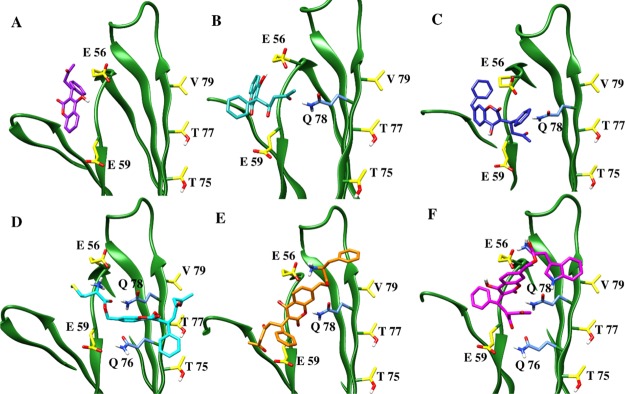Figure 3.
Graphical representation of warfarin (A) (purple) and its analogues (B–F) [compound 1 (B)—light sea green, compound 2 (C)—medium blue, compound 3 (D)—cyan, compound 4 (E)—orange, and compound 5 (F)—magenta] at the binding site of the Axl receptor. The receptor is represented as a secondary structure and is shown in green, the key binding residues responsible for ligand dimerization, such as E 56, E 59, T 75, T 77, and V 79, are highlighted in yellow, while the residues that make additional contacts are shown in cornflower blue. The compounds as well as the residues are shown in ball and stick representation.

